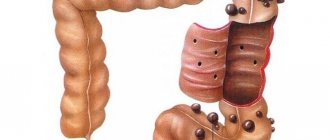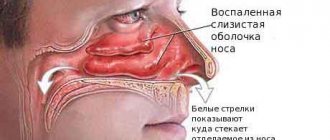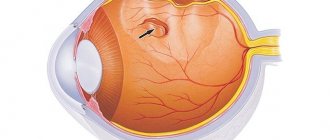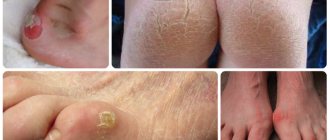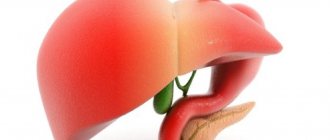Almost every person suffers from dental disease from time to time. The most common dental disease is caries. It is a process of destruction of hard tooth tissues. First, caries affects the tooth enamel and if left untreated, the process begins to affect the deeper layers of the tooth and can lead to its complete destruction. If the disease starts, a hole appears in the tooth enamel; it gradually increases, allowing pathogenic bacteria access inside the tooth. This leads to the fact that other diseases join caries, aggravating the situation. What are the causes of caries and is it possible to protect yourself from it?
Caries in children
Since acute forms of dental caries are more common in children, special attention should be paid to oral care from the moment the first tooth erupts. A properly formulated diet, hygiene and systematic examinations with a doctor will help to avoid many problems.
Classification of childhood caries is based on the place of origin and degree of development. It is not easy to detect carious changes in teeth in preschoolers, especially at the initial stage. A dental examination using special equipment is required. If a preschooler has a toothache, this indicates a medium or deep stage of development of the disease. Symptoms of the disease do not appear at all for a long time, which is why routine medical examinations by the dentist are needed.
Bottle caries
Bottle caries (another name is circular) caries appears in children under 3 years of age, negatively affecting baby teeth during eruption. The damage to the upper front teeth begins, the disease is detected by the formation of white spots in the area where the tooth adheres to the gum or where the teeth touch.
Experts believe that the appearance and development of bottle tooth caries is facilitated by feeding children before bedtime - no matter whether it is during the day or at night. This does not mean only breastfeeding and bottle feeding: the beginning of carious destruction can be caused by any cariogenic product (confectionery, sweet drinks). After eating, food remains get stuck between the child’s teeth, which leads to the onset of the disease.
If the slightest signs of disease are detected, you should visit a pediatric dentist. Treatment of a child’s teeth is successful, regardless of the stage of development of the disease.
The equipment of modern clinics and the use of innovative diagnostic methods make it possible to identify the disease at any stage of development. The use of computed tomography, targeted and panoramic images provide a complete picture of the condition of the oral cavity.
Do baby teeth need to be treated?
You should not think that if baby teeth are going to fall out anyway, then there is no need to treat them. The fact is that carious lesions in milk teeth will not allow permanent teeth to develop normally. Often, untreated teeth in childhood can result in serious diseases. Regular dental checkups are necessary, and treatment must be carried out in a timely manner. This is the key to healthy teeth and a beautiful smile as an adult.
Folk remedies against caries
Caries develops due to exposure to pathogens, so traditional methods of treatment are based on disinfection of the oral cavity. Let's consider the most common and effective means:
- Propolis is the most famous way to treat caries at home . This product is an antibiotic and antiseptic, therefore it effectively fights bacteria, thereby stopping their reproduction and reducing pain. You can use a solution of alcohol tincture for rinsing, apply a cotton wool soaked in it to the sore tooth, or chew the propolis itself directly.
- Sage is another natural antiseptic and antibiotic. A tincture prepared on its basis is used for rinsing and compresses. In addition to eliminating bacteria, it is a wound-healing and anti-inflammatory agent, and has a beneficial effect on the gums and mucous membranes.
- Onion peel is a disinfectant that is used in the form of decoctions and tinctures. Eliminates harmful microorganisms and relieves pain.
- Calamus - the crushed root of the plant is used to prepare alcoholic infusions or brewed. Can be used together with propolis solution to rinse the mouth.
- Fir oil is another natural remedy with an analgesic and anti-inflammatory effect. The moistened cotton wool must be applied to the sore tooth.
Important! Homemade tinctures and decoctions, due to their antiseptic properties, reduce the rate of bacterial growth, but they do not restore tooth enamel. Therefore, they should be used for prevention and pain reduction, but not as the main method of treatment.
Treatment of caries
Improving existing ones and introducing innovative methods for diagnosing and prescribing appropriate therapy for dental caries makes it possible to qualitatively treat and maintain healthy teeth and gums. More recently, when advanced caries was detected, a tooth had to be removed, but now dentists perform special operations to save the tooth.
When is treatment for dental caries indicated?
Treatment of a carious tooth should begin when visible changes are detected (visual) or if there is discomfort.
In the first case, the appearance of stains on tooth enamel, darkening of the cervical part of the tooth, chips, darkening around the filling, or the appearance of a carious hole will be an indication for contacting a doctor.
Tactile indications include the appearance of pain from sweet, salty or sour foods, as well as the appearance of sharp acute pain due to temperature changes.
Conservative therapy without preparation
At the initial stages of the development of dental caries, it is possible to treat using non-invasive methods, when even a drill is not required. The goal of such treatment is to prevent progress in the development of the disease and, most importantly, to preserve the tooth. Only a person who regularly visits the dental office can be treated in this way: the doctor will notice the slightest deviations from the norm, signs of an incipient disease, and prescribe the necessary therapy in a timely manner.
The essence of the non-invasive technique is that soft plaque is removed and tooth enamel is mineralized. You will need to undergo a medical examination for diagnostic purposes, a gum isolation procedure and the application of medicinal drugs. This takes about an hour, it all depends on the equipment used and the professionalism of the attending physician.
Our clinic uses Icon and Clinpro technology.
Diagnosis of caries
If the carious process has already developed, it becomes visible to the naked eye, but at the initial stage it is impossible to independently determine the presence of the disease. This can only be done by a dentist using special equipment. Three main types of examination are used: vital staining of tooth enamel, ultraviolet irradiation, and x-rays.
- Vital enamel staining. This method helps to diagnose the development of the carious process while it is not yet noticeable. To do this, the dentist coats the teeth with a special coloring composition and looks at the change in the color of the enamel. Healthy enamel is stained, but damaged areas are not. This indicates an early stage of the disease. In this case, the doctor prescribes the patient a course of remineralizing therapy. Special preparations are applied to the teeth and strengthen them, stopping the further development of caries.
Vital staining of teeth is a professional way to diagnose caries. The teeth are cleaned of plaque, dried of saliva, dye is applied to the teeth, then the dye is washed off and the areas affected by caries become visible.
- Ultraviolet irradiation. During this procedure, the dentist cleans the patient's teeth from plaque and dries them, and then irradiates them with an ultraviolet lamp. Areas of enamel affected by caries do not emit ultraviolet light, so they can be detected immediately.
- X-ray examination. X-rays are used not only to diagnose caries. The method allows you to assess the location of the roots, the degree of damage to the tooth tissue and nearby areas.
Treatment with preparation of hard tooth tissues
This method is based on hardware treatment of the affected areas of the tooth under anesthesia. Depending on the stage of development of the disease, there are several stages in treatment. For average caries it is:
- anesthesia
- mechanical and medicinal treatment of canals
- installation of protective lining
- filling taking into account the dental characteristics of the tooth
- grinding and polishing of tooth surfaces
Medium and deep stage treatment takes an hour on average, but in some cases it takes longer. To treat average caries, one visit is enough.
The effect of treatment procedures is determined by the professionalism of the doctor, the quality of medications and equipment, and the individual characteristics of the patient’s body. The key to maintaining the result is compliance with proper nutrition and hygiene rules, as well as maintaining the protective functions of the body.
Stages of the disease
Like any disease, caries develops gradually and has several stages. Dentists distinguish three stages of disease development.
- Early caries. At this stage, the tooth retains its integrity, but a small white spot appears on its surface. Gradually, the enamel becomes pigmented, acquiring a grayish tint, and its surface becomes rough.
- Average caries. At this stage, the carious process affects not only the enamel, but also the next layer of the tooth - dentin, as a result of which a cavity appears in it, which gradually increases in size.
- Deep caries. If the patient does not see a doctor, the carious process continues its destructive effect and affects the deep layers of the tooth. At this stage, others may join the main disease.
This figure shows caries in three stages: early, middle and deep caries.
Each person develops caries at a different rate - some quickly, some slowly. Usually in adults the disease is chronic and sluggish. In children, this process occurs much faster, since baby teeth are not as strong as permanent teeth. The rapid course of the disease is called acute caries.
How to treat caries at home
There is a clear answer to this question: “No way!” Dental caries cannot be treated at home; you can only carry out prevention to prevent it from appearing:
- Regular hygiene procedures using calcium and fluoride paste, rinses and dental floss are required
- once every six months - visit the dentist
- Protein foods should predominate in the menu, reduce the amount of carbohydrates
- Additionally, strengthening mineralized gels can be used
Causes
Most often, older people face this problem. Of the 10 pensioners who sat in the dental chair, 7 are diagnosed with dental root caries. Due to age, many experience some changes in the periodontal tissues, namely: their blood supply and nutrition deteriorate.
As a result, the gums, deprived of proper mineral nutrition, recede and expose the root of the tooth. In this unprotected position, he becomes very vulnerable to the harmful effects of the acid produced by bacteria.
Toothpaste for caries
Much less frequently, but young people may also need treatment for root caries. They may be at risk for the following reasons:
- insufficient hygiene;
- inflammation of periodontal tissues;
- error in dental prosthetics;
- use of medications;
- micronutrient deficiency.
Insufficient hygiene. Anyone who regularly neglects the basic rules of oral care should think about this fact: not even two hours after brushing your teeth, plaque begins to appear on them again.
Reference. At first, the harmful waste product of bacteria - acid - is neutralized by saliva. But after a couple of hours, the plaque becomes very dense and the amount is no longer enough to cope with all the microorganisms.
Then the acid begins to destroy the enamel, the upper layers of dentin and sooner or later becomes the cause of the appearance of carious lesions in the cervical part of the tooth. Without timely treatment, it develops into root caries.
Inflammation of periodontal tissues. Any gum disease, be it gingivitis, periodontal disease or periodontitis, at its advanced stage provokes the formation of pockets in the gum area. Naturally, when eating, small particles of food can get there and accumulate. Over time, such “reserves” begin to rot, which will inevitably provoke the destruction of the root.
Error in dental prosthetics. An incorrectly installed metal-ceramic crown, an inappropriate size or poor-quality prosthesis material - all this will sooner or later cause premature atrophy of periodontal tissue. Having receded, the gums expose the tooth roots, on which millions of bacteria immediately settle.
Use of medications. There are certain groups of drugs that can inhibit the function of saliva production. Dry mouth is the best condition for the development of pathogenic microflora.
Severe deficiency of beneficial microelements in the body. Without enough fluoride and calcium, the enamel will become brittle and unable to withstand the constant attack of bacteria.
Prevention of caries
Even strict adherence to hygienic rules for oral care does not mean that you can ignore visiting the dentist once every six months. Regular, thorough teeth cleaning alone is not enough; special professional cleaning is necessary to completely remove plaque and formed stones. The doctor also carries out a procedure that is effective for disease prevention to restore the mineral balance of tooth tissue. Remineralization increases resistance to disease and is a mandatory step in teeth whitening - before and after.
Of particular importance in preventive measures is the sealing of dental fissures. Today in dental practice, the use of sealants that cover fissures and blind dental pits is widely accepted. It is painless and is usually prescribed for children and adolescents.
Incorrect bite and misaligned teeth can also trigger the development of caries, so treating these deficiencies is not just a solution to the issue of attractiveness, it is a matter of dental health. It is necessary to consult an orthodontist and carry out treatment with him if necessary.
Why does tooth decay occur?
This disease does not occur on its own. It is caused by special cariogenic bacteria Streptococcus mutans, Streptococcus sanguis and actinomycetes living in the oral cavity. But why do some people rarely experience caries, while others are forced to visit the dentist every year, or even more often? The fact is that each organism has different resistance to these microorganisms. It has been noted that people with weak immunity are more susceptible to the effects of cariogenic bacteria.
Attention! Bacteria live and multiply in dental plaque. Brushing your teeth can remove plaque, but using a toothbrush can only remove soft deposits. Within a few days, plaque turns into hard tartar, which cannot be removed on your own. To get rid of it, you need to see a doctor. Using special instruments, the doctor will break up and remove hard deposits. If you do not get rid of tartar in time, cariogenic bacteria will continuously attack the tooth, and this will sooner or later lead to caries.
There are many reasons for the occurrence of caries, but we encounter some every day: improper oral care, poor water quality, lack of vitamins and minerals in the body - it is necessary to pay attention to these factors, because. we can control them.
Bacteria require certain conditions to actively reproduce. These conditions are:
- poor oral care;
- poor cleaning;
- the predominance of foods rich in carbohydrates (flour, sweets) in the diet, as well as a lack of fresh vegetables and fruits;
- low-quality drinking water with low calcium, fluorine, phosphorus content;
- lack of vitamins;
- decreased immunity;
- diseases of the digestive system;
- disruption of the formation of teeth, which can be caused by diseases suffered in childhood (tuberculosis, rickets).
Under the influence of these factors, plaque begins to accumulate on the teeth - a favorable environment for bacteria. The enamel becomes thinner, becomes brittle and is affected by caries. To avoid this, it is necessary to eliminate or reduce the influence of harmful factors.
Why does tooth decay still occur?
As mentioned above, the main causes of the disease are cariogenic bacteria that actively multiply in food debris and dental plaque. But, in addition to this, there are several additional factors that increase the risk of caries. What does this include?
- Crowded teeth. Some people have teeth very close to each other. In this case, food particles become more stuck in the interdental spaces and it is quite problematic to clean them out.
Teeth crowding is a pathology, the teeth are located too close to each other, some of them erupt outside the arch and overlap each other, which complicates hygienic care and increases the risk of developing carious bacteria.
- Insufficient salivation. Saliva helps clean the surface of the enamel, washing away some of the bacteria. Normally, the body produces from one and a half to two liters of saliva per day. This amount allows you to neutralize the acid produced by bacteria. People with weak salivation suffer from caries much more often.
- Acid-base indicator of saliva. To protect teeth, not only the quantity of saliva is of great importance, but also its quality. Saliva has an alkaline environment, which neutralizes acids that are harmful to enamel. If saliva has a neutral indicator, it is not capable of properly cleaning enamel.
- Poor nutrition. Dental health largely depends on what foods a person eats. Fans of foods containing fructose, glucose, sucrose, starch, and lactose most often turn to dentists. And untimely brushing and rinsing of the mouth accelerates the development of caries.
Complications of caries
Most often, the cause of complications with dental caries is the person himself, however, improper treatment can lead to unpleasant consequences (which is why choosing a dental clinic is so important). The development of untreated dental caries leads to negative changes in the structure of dentin, it becomes infected, the pulp becomes inflamed (the disease is called “pulpitis”), which is accompanied by acute pain. However, pain occurs not only with inflammation of the pulp, but also with deep caries, since the pulp chamber is covered only by a thin layer of affected tissue, which cannot protect against mechanical pressure on the neurovascular bundle during meals.
Teeth can also hurt in the middle stage: the nerve endings in the area of the enamel-dentin line react to external influences, causing pain.
Deep infection often leads to complications. In some cases, phlegmons and abscesses develop, which pose a significant threat to the general condition of the patient, and sometimes even to his life. the body has to devote all its strength to fighting the source of infection, the immune system is weakened, which can lead to the occurrence of systemic diseases. In such situations, it is often necessary to resort to surgery to get rid of the purulent contents and prevent the infection from spreading further.
What is dental caries?
The term “caries,” literally translated from Latin, means “rotting.” And in fact, caries is the destruction of hard tooth tissues through the constant influence of harmful microorganisms.
It is with caries that people most often go to the dentist. And if you do not take timely measures to treat teeth in the initial stages of caries, when the process of destruction of enamel has just begun, then the consequences can become very serious, including inflammation of the pulp. In the most advanced cases of tooth decay, a person may lose a tooth.
Caries in childhood
Much has been written about the various causes of dental caries in children. As children, we were often told that if you eat too much sweets, your teeth will hurt.
Caries in children
Studies have shown that there is no direct connection between sugar, chocolate and the destruction of enamel.
It’s just that the remains of these products are excellent food for bacteria. Those, in turn, begin to multiply en masse and carry out the process already described above. If a child's tooth enamel was weak to begin with, he or she is at greater risk of tooth decay.
Children brushing their teeth
As children, we didn't really like brushing our teeth. Firstly, this is a boring and monotonous procedure. Secondly, parents force you to do it. In children, the principle of denial is triggered. Are they asking you to do something? I'll do the exact opposite. You have to control the process.
But it’s not always possible to keep track of this, as well as snacks between meals. They cause destructive processes. The child ate, brushed his teeth, and then again created a favorable environment for bacteria. Small children put whatever they can into their mouths, further increasing the number of pathogenic microorganisms.
Prevention of caries of milk and permanent teeth in children
Video - Why is caries of baby teeth dangerous?
By localization of the lesion: circular, atypical, wedge-shaped, aproximal and retrograde
Another classification of caries is based on the localization of the lesion in different parts of the tooth: on the location of the spots and cavities .
The types of pathological process include:
- fissure caries occurs on fissures - grooves and depressions that cover the chewing part of the molars;
- the approximal form develops between the teeth : places where they touch each other and are more difficult to clean;
- cervical caries is localized in the neck of the tooth closer to the gum;
- a circular defect affects the upper part of the incisors , as if encircling them, and occurs more often in adulthood than in childhood;
- canine caries is observed on the contact surfaces of the teeth, and rarely affects other areas;
- atypical caries develops in places unusual for the disease : cutting edges or tubercles;
- wedge-shaped type - a defect that forms at the junction of teeth and gums.
All types of caries have similar symptoms of varying intensity: increased sensitivity of the enamel, discomfort when exposed to irritants, bad breath , discoloration of the enamel. The difference is that it is not always possible to notice carious spots and cavities on your own . The atypical and approximal form of the disease can only be diagnosed by a dentist, sometimes after professional teeth cleaning, removal of plaque and stone.
Price
How much does the treatment procedure cost? The average price for standard treatment of front teeth in Moscow ranges from 3,000 to 4,000 rubles. The cost of restoring a problematic unit starts from 35,000 rubles. Patients will have to pay approximately the same amount to have their teeth treated using the Ikon method.
Treatment of deep caries of the anterior elements will cost at least 70,000 -80,000 rubles. Replacing a lost tooth with an artificial one will cost even more – up to 350,000 if an implant is installed.
Caries of the front teeth always causes serious harm, both physically and aesthetically. The process causes severe discomfort, unpleasant sensations and spoils the smile. Therefore, it is best to warn yourself in advance against this pathology. Dentists recommend closely monitoring the health of your oral cavity (including during primary occlusion) and taking all necessary preventive measures.
Definition of disease
Caries is a chronic dental disease in which color changes, demineralization occurs and subsequent destruction of the soft tissues of the tooth. As the disease progresses, a small dark spot on the surface or fissures gradually develops, turning into a characteristic black cavity. If the carious lesion reaches the pulp and roots, serious complications arise.
There are several classifications of the disease depending on the degree of damage, location and characteristics of its course. Caries often occurs equally in adults, children and adolescents.
According to statistics, caries is significantly less common in equatorial countries than in the north. In addition, there is an increased risk of developing the disease in residents of developing countries.
Treatment options
The method of dealing with pathology largely depends on the complexity and localization of the carious process. The dentist will be able to determine the exact treatment regimen for caries of the anterior teeth after a visual examination of the patient’s oral cavity and evaluation of the X-ray data.
In the absence of destruction of the lower layers of the unit, patients are offered remineralization of the enamel - its restoration and saturation with useful microelements. The procedure involves the following algorithm of actions:
- cleansing the oral cavity of stones and bacterial plaque (it is necessary to remove all plaque to increase the effectiveness of the procedure);
- grinding of irregularities formed on the problem tooth;
- coating the outer layer of the element with remineralizing compounds produced in the form of a gel, varnish or solution (Remodent, Fluorlak, Bifluoride).
The remineralization course consists of 10-20 procedures performed daily or every other day. The duration of one manipulation is up to 40 minutes.
During remineralization, the patient will not feel pain and will not require additional anesthesia. After the procedure, the doctor will advise the patient to use restorative pastes enriched with fluoride and calcium for a month. The procedure is indicated for both children over 3 years of age and adults.
Photos before and after dental treatment
To combat caries at the spot stage, other, more modern treatment methods can be used:
- laser therapy;
- ozone therapy;
- Icon technology;
- air-kinetic non-contact method.
What to do with advanced forms of the problem? If caries has affected the dentin of an element, then they resort to radical ways to solve the problem - installing a filling. It will prevent the spread of bacterial flora to neighboring areas of the oral cavity.
Contact treatment of dental canals consists of the following manipulations:
- choosing a suitable filling material;
- injection of an anesthetic into the gums (if necessary);
- dissecting affected tissues with a drill;
- installation of a rubber dam to isolate the work area from saliva;
- antiseptic treatment of the prepared area;
- lubricating enamel and dents with special materials for their better adhesion to the filling;
- installing a gasket under the seal to prevent shrinkage of the seal;
- filling the cavity with cement or composite material;
- grinding and polishing the filling area.
When treating anterior teeth, it is necessary to more carefully select the shade of the filling so that it is in perfect harmony with the natural shade of the enamel. If it is impossible to cure the problem unit, its removal is prescribed. Subsequently, to fill the aesthetic defect, a crown or implant will be installed in place of the lost unit.
Specifics of the disease
The main cause of the problem is the activation of pathogenic flora in the oral cavity under the influence of external and internal negative factors. Pathogenic bacteria feed on food debris stuck between teeth and release acid that destroys enamel. It washes away from the enamel surface the main components responsible for the hardness of teeth.
The problem has several features:
- Small thickness of enamel and dentin in the frontal areas. Because of this, caries of the front teeth develops much faster than when other elements of the row are affected. Often the problem is discovered when pathogenic bacteria penetrate the unit's pulp or root system. Because of this, the treatment of the carious process is significantly complicated.
- A small interdental gap between the front elements, in which plaque and food debris intensively accumulate. The problem increases the risk of developing dental diseases in the area in question.
Caries of the anterior teeth has a rapid progression, so treatment measures should be organized when the first signs of the problem are detected. In this case, a person will be able to avoid complications and maintain the attractiveness of his smile.
Danger of disease
Caries of the front teeth also poses the same threat as damage to the lateral elements. Among the possible complications of the problem it is worth noting:
- rapid spread of the inflammatory process to the neurovascular endings and jaw tissue;
- high risk of damage to the root zone due to the thinness of the incisor enamel;
- loss of a unit due to difficulties encountered during its treatment;
- the appearance of severe pain even in the early stages of the development of pathology;
- increased enamel response to various stimuli.
Despite the fact that damage to the enamel of the frontal teeth develops faster, it is easier to identify it during an examination by a dentist or on your own. It is not difficult to notice a carious spot on the incisors, except when it is located at the back. In addition, caries of the anterior elements makes itself felt more quickly with painful symptoms. This also allows you to contact a specialist in time and save the problem unit.
Moderate damage
According to the clinical picture, middle caries is identical to the superficial stage. The only distinguishing feature is the depth of penetration of pathogenic microorganisms. The affected area extends to dentin.
There is a painful reaction to cold and hot food, which, in contrast to mild discomfort with superficial caries, is more unpleasant and protracted. The damage to the bone tissue is localized, as a rule, not along the width of the crown, but deeper, touching the dentin layer.
The third stage of caries is diagnosed thanks to an instrumental examination by a specialist and a control x-ray, which allows the dentist to determine the extent of bone tissue damage.
The method of treating the disease is no different from the therapeutic method of the previous stage. The dentist also removes the affected area and fills the canals.
At this stage, you can still save the crown of your own tooth, so you should not delay a visit to a specialist if the described symptoms occur.
Features of tooth root caries
Based on the part of the tooth where the carious lesion is located, the disease is divided into dental crown, cervical, basal and root caries. The main difference between root caries and all others is its localization deep under the gum.
And if a lesion in the cervical and root parts of the tooth can be detected during a visual examination, then caries of the root cement is invisible and therefore the most dangerous of all. In addition, such caries develops noticeably faster than on a crown, since tooth cement is more sensitive to the effects of bacteria. Regarding the depth of penetration, tooth root caries can be without cavity formation or with cavity formation.
Factors that lead to the development of the disease are divided into groups:
- Affecting periodontal disease: insufficient oral hygiene, neglect of professional cleaning in the dentist's office, periodontal disease, anatomical features of the oral cavity.
- Factors that provoke the development of caries: poor nutrition, fluoride deficiency, improper salivation.
- In addition, the disease can be triggered by complications after treatment of cervical caries and incorrectly installed dentures.
The risk group for the development of root caries includes people with problems such as periodontal disease, infectious diseases, low immunity and chronic stress.
Elderly patients have a risk of developing caries in permanent teeth of up to 80%. This is dictated by receding gums and exposure of the root part of the tooth, characteristic of old age.
Those at risk include smokers and people who abuse alcohol and caffeinated drinks.
Classification
Caries is a well-studied and thoroughly studied disease in dentistry. In addition to the generally accepted types of caries, depending on the stage of the lesion, other divisions of the disease are considered according to certain characteristics.
According to WHO
Dental caries is an official disease that is considered in ICD-10. In the last section, the following types of caries are distinguished:
- enamel (this also includes the “chalk stain” on the surface of the tooth);
- dentin;
- cementite;
- suspended caries;
- odontoplasia or tissue resorption (especially often diagnosed in young children);
- caries of unknown nature - unspecified (rare).
This classification appeared due to the fact that it is not always possible to determine the level of damage - the process can spread to several teeth or layers at once.
By primacy of appearance
Depending on the time and characteristics of the occurrence of dental caries, two types are distinguished:
- Primary caries . Appears on healthy teeth against the background of one or more provoking factors. Most common;
- Secondary caries . It develops on already treated teeth. As a rule, such a disease appears due to poor quality or incomplete treatment. It is dangerous due to the complexity of diagnosis, since pathology can develop under the filling. Details about secondary caries in this article.
Due to the likelihood of developing secondary or recurrent caries after filling a tooth, it is recommended to take a preventive radiograph, which shows the remaining traces of carious lesions.
If there is caries between teeth, how is it treated?
27.11.2019
Some people believe that you need to be born with healthy teeth. Surely there are unique people in everyone's family who have never gone to the dentist in their lives and yet have excellent health. There are also opposite situations - a person already at a fairly young age suffers from various carious diseases, although he is constantly seen by a doctor. But these two phenomena are like a double-edged sword. They are the exception to the rule rather than the rule.
Most of us encounter problems when we don’t take care of our teeth. One of the most unpleasant of them is considered to be caries between teeth. We propose to talk about this pathology in detail today.
Where does interdental caries appear?
This disease appears on contact surfaces, i.e. between two adjacent teeth. The pathology is most often localized between the chewing molars, which are responsible for grinding and high-quality chewing of food. Less often - between the front incisors and canines, which bite off food. As you already understand, both areas come into most contact with food and are constantly surrounded by bacteria.
Who gets the disease?
Tooth decay is one of the most common dental problems. It can occur in any adult, as well as in any child.
Important! The problem often appears in children with primary occlusion, especially after the age of 4 years. It is during this period of time that children need enhanced oral hygiene and actively eat almost all foods from the adult table. And parents believe that the baby bite will soon be replaced by a permanent one, so there is no need to take the baby to the dentist for any reason. But this opinion is wrong, because the infection can spread to the rudiments of permanent roots.
Why does pathology appear?
The main reason for the appearance of caries between the chewing and front teeth is the accumulation of food debris in the interdental spaces and the active proliferation of bacteria on them. Unfortunately, it is almost impossible to completely remove all deposits from such hard-to-reach places. This can only be done with additional equipment, in addition to a brush and paste, floss and irrigator. But let's remember our usual day and answer ourselves honestly: do we have such devices in our arsenal and do we use them literally after every snack? If not, then interdental caries is a major problem that anyone can face.
The scheme for the emergence of the destructive process is approximately as follows:
- you eat and do not do your oral hygiene well enough or on time,
- plaque appears on all surfaces and mucous membranes of the mouth,
- leftover food and natural sugars release acids,
- acids settle on the enamel and corrode its structure and density: if this process was not stopped in time, then dentin is also affected. So, from a small and harmless, painless spot, the problem can over time develop into a deep carious lesion, the need to remove the nerve or the tooth itself.
Pathology very often occurs in people with malocclusion, with crowded rows, and the presence of dystopic wisdom teeth. Such anomalies complicate hygienic care and make the problem hidden in the initial stages, unnoticeable without the use of x-rays and professional dental equipment.
“We all live in the modern world and understand perfectly well that the condition of teeth is affected by a whole range of different reasons: ecology, quality of nutrition, health and immunity, diseases of the body, smoking, sweets, correctness and frequency of hygiene procedures. On the one hand, following all these rules is simple, but only in words. Life is unpredictable, the rhythm is frantic, so we always lose sight of something. This is why I advise patients to insure themselves against serious problems. To do this, just start visiting a dentist a few times a year, who will guard your health,” advises Mikhail Semenov, a hygienist.
How to Diagnose the Problem
What does caries look like between teeth? If it has formed on the contact surfaces of the front incisors, then it can be quite easy to notice. The presence of dark spots, loss of shine or roughness of hard tissues, carious cavities, chips will indicate negative changes in the structure of enamel or dentin.
But if the problem is localized on the chewing contact areas, especially on their inner side, then it can easily be overlooked, because it is not noticeable even with a fairly close examination of the oral cavity. Naturally, if the examination is carried out by an ordinary person, and not a dentist. As a rule, with this pathology, patients consult a doctor only when obvious pain, acute reactions to sour and salty, cold and hot appear. When discomfort occurs when chewing food, when pieces of food get stuck between the teeth. And during professional diagnostics, a large carious hole or “hole” is discovered in the tooth.
The main task of a person is to promptly identify the disease and seek professional help. After all, at the spot or initial stage, caries is easier to treat, simpler, cheaper and does not yet hurt. Therefore, even if the problem is not visible outwardly, listen to your feelings - any discomfort, the occurrence of short-term pain and reactions, the appearance of persistent bad breath should be a reason to be wary.
Why is interdental caries dangerous?
| For anterior incisors | For chewing molars |
|
|
Important! There are situations when interdental caries affects only one tooth. This clinical picture is typical at the initial stage of the disease or when a prosthesis, filling or crown is installed on an adjacent tooth. In most cases, i.e. At the time of contacting a doctor, both units located nearby are already suffering.
Classifications of the disease
- by stages: spot stage, initial stage, medium and deep caries. In the first two stages, only the enamel is affected, then the problem is aggravated by the destruction of dentin. The deep stage can be complicated by pulpitis and periodontitis, the formation of a cyst or granuloma,
- according to the course: acute and chronic. In the first case, the patient feels the whole range of unpleasant phenomena: pain, bad breath. In the second, the teeth may not even bother, and the process proceeds sluggishly, but at the same time there is a deep and wide carious cavity filled with dark, dense dentin.
What doctors advise you to do
Some patients think for a long time about whether it is worth treating caries between teeth. But do not forget that in this case, delay will cost you additional expenses and complex treatment, because in order to remove the problem, the doctor will most likely have to work on two elements of the dentition at once. Therefore, the milder the stage of the disease, the “less bloodshed” you can get away with.
Naturally, a specialist will not begin treatment without a thorough diagnosis and identification of the stage of the disease. Modern diagnostic measures will help him with this. Firstly, a visual examination using a probe and a mirror, but as some studies show, this pathology at this stage is detected only in 25-40% of all cases, i.e. it can elude even doctors. Secondly, x-rays. Thirdly, staining or transillumination, which will help detect the destructive process even in the most inaccessible areas.
Now let's talk about how to treat caries between teeth. Everything again will depend on the depth and scale of spread of the pathological process.
Spot stage and initial stage
At these stages, the problem can be solved without invasive intervention and the beauty, shape, and amount of living tissue of enamel and dentin can be preserved to the maximum. The doctor may prescribe you remineralization therapy or fluoridation, or treatment using the innovative Icon technology. During these procedures, a special protective sealing composition enriched with microelements is applied to the teeth, which is designed to restore the integrity of the enamel, increase its resistance to bacteria, and strengthen it.
To disguise, for example, the unsightly appearance of enamel, small cracks and chips on the front elements of the dentition, a specialist can carry out artistic extensions using light-curing composite or compomer materials. This will help restore the natural shade and shape of the tooth.
Medium and deep caries
If caries between teeth has reached these two stages, then what remains to be done? There is nothing left to do but drill out the affected areas using a dental bur. The procedure is not pleasant, but you can’t do without it. It is carried out by a specialist only with preliminary anesthesia, so all unpleasant sensations will be limited to the sounds made by the drill. The doctor will thoroughly clean necrotic areas, carious lesions, perform asepsis and disinfection, and apply therapeutic and insulating pads. Next, he will install a filling, which he will then grind and polish according to your individual anatomical features.
Treatment of deep lesions is often carried out not in one visit to the dental office, but in two stages. After all, a diseased tooth has a very small layer of dentin, under which the pulp is dangerously close, and there is also severe destruction of the coronal part, sometimes even the root suffers. To exclude further complications, doctors first install a temporary filling, and after a while replace it with a permanent one. In addition, in such situations, treatment is not always limited to installing a filling; some situations require more radical measures: removal of the nerve, installation of a stump inlay, and even prosthetics with an artificial crown. Also take into account the fact that treatment, as a rule, is required not for one, but for two teeth at once.
On a note! If treatment is carried out on the contact surfaces of chewing units, then doctors use special matrices and wedges in their work, which help restore the natural shape of the teeth with all their fissures and tubercles. Also, the primary task for specialists is to make strong, wear-resistant fillings that will withstand the chewing load. Here aesthetics comes second than on the front units. Glass ionomer materials are often used for restorations.
Is it possible to avoid problems?
In order not to think about how to remove caries between teeth, try to make every effort that will help avoid the problem. First of all, do not ignore the advice of doctors about purchasing dental floss, which is the best assistant for fighting bacteria and food debris that “hide” in the most inaccessible places. Of course, irrigators also solve the problem well. But it’s impossible to carry them with you everywhere and always, and the floss can easily fit in a purse or even a pocket. You can use it after lunch at work, after a sweet snack or visiting a cafe.
Also try to see the dentist not as someone to be afraid of. Reconsider your point of view: a modern doctor will not hurt you, visiting him will not take much time and effort, which means you need to make preventive examinations and professional hygiene one of your healthy habits.
Category Caries Published by Mister stomatologist
Prevention
Caries of any form and degree can be avoided by simple prevention. According to statistics, maintaining oral hygiene reduces the risk of developing pathology by up to 75%. To prevent the development of pathology, the following preventive measures against caries are recommended:
- high-quality and regular oral hygiene, brushing teeth and using mouthwash and floss;
- reducing the amount of sweet foods in the diet;
- strengthening the immune system, especially in spring and autumn;
- systematically undergoing routine dental examinations;
- timely treatment of not only dental diseases, but also systemic diseases.
To avoid the formation of caries, it is recommended to undergo professional cleaning and apply remineralizing compounds at least once a year. In addition, it is extremely important to promptly remove tartar, which can lead to complications.
Stages of carious lesions
The disease is characterized by slow development and gradual destruction of dental tissue. At the inception stage, the symptoms of caries have a very poor clinical picture, so often a person does not notice the development of caries, since nothing hurts.
As a rule, a visit to the dentist occurs when the carious lesion has spread deeper or has affected a large part of the tooth crown. At this time, signs of caries become obvious: complaints of severe pain, reactions to food and temperature stimuli begin to appear.
It is necessary to carefully examine your teeth in order to detect caries in the early stages of development and eliminate it immediately. Below we will describe four stages of caries, the classification of which is focused on the depth of the lesion.
initial stage
The primary pathological focus is not a strip defect, but only changes the color of the enamel. It affects its surface and is a rough flaw in the form of chalky spots of different sizes. There are no painful symptoms at this stage, only manifestations of a cosmetic defect are observed. Most often, patients discover the initial form of caries if it is localized on the front teeth in the smile area.
How to get rid of dental caries in the initial stages? To eliminate the white spot, it is not necessary to resort to drilling; it is enough to use special external applications with medicinal compounds. The therapy consists of restoring the structure using remineralizing solutions with fluorides, calcium compounds and other useful microelements to strengthen the enamel.
To enhance the result, the patient is advised to take an internal vitamin-mineral complex.
Superficial stage
Superficial carious lesion is a continuation of the initial stage in the absence of treatment. It likes to begin as a well-defined, shallow, streaky oval or rounded defect. Caries of this form affects the enamel surface and is practically no different from it in color. Symptoms are still not varied, cosmetic defects remain. If the carious cavity has affected the vestibular side or the chewing surface of the molars, then the soft tissues may be slightly scratched when in contact with the edges of the cavity. Some patients experience increased sensitivity and an unpleasant reaction to sweet, cold foods.
How to treat caries on teeth with superficial destruction? In this case, it is necessary to resort to preparation. This is necessary to create favorable conditions for fixing the filling. During the procedure, the dentist uses special dyes, thanks to which it is possible to accurately identify the affected areas of the enamel, and then eliminate them by drilling. Then the doctor selects the color of the filling material that is close to natural teeth and applies it in layers.
If a light filling is installed, the dentist will apply ultraviolet light to each layer to harden it. When filling with chemically cured materials, a special lamp is not required; the filling hardens on its own. At the final stage, the filling is polished, adjusted to the bite, and physiological bumps (fissures) are formed on the surface of the molars.
The table shows the stages of disease development. You can compare the extent of tooth damage and their x-rays.
Medium deep caries
With average caries, destruction of all layers of enamel occurs, extending to the intersection of the enamel-dentin border and the surface layer of dentin.
Symptoms of moderate caries become more obvious due to the involvement of deep dental tissues. The cosmetic defect is much more obvious, and food debris begins to get stuck in the deep carious cavity. The patient complains of pain while eating.
How to cure mid-stage caries? Its removal will not be possible without tooth preparation, since there has been a change in the color of the enamel and dentin in the carious lesion, and pigmented pathological tissues must be eliminated without fail. It has long been established that placing a filling on a poorly cleaned cavity will lead to repeated recurrence of caries and complications.
The treatment method consists of the following steps:
- the dentist carefully prepares the affected cavity;
- the bottom and walls, together with the enamel-dentin border, are lined with lining insulating material so that the toxic substances of the filling do not penetrate into the tooth. This action is carried out using appropriate materials; if modern types of non-toxic filling materials are installed, then an insulating gasket is not needed;
- then the dentist fills the prepared area with a filling and finishes the treated tooth.
Deep stage of damage
When this type of dental caries occurs, the symptoms cannot be confused with anything. As the name suggests, such dental caries is an advanced form of the disease and the result of ignored timely treatment at the dentist. With deep caries, deep strip defects are formed that completely penetrate all tissues (enamel and dentin). The defect is localized near the pulp, so the symptoms are pronounced.
Larisa Kopylova
Dentist-therapist
With deep damage, it is painful for a person to eat food or perform hygiene - the causative tooth makes itself felt when any irritant hits it. There is a slow subsidence of the syndrome when the irritating factor is eliminated.
Is it possible to cure caries in this case? Of course, but treatment at the stage of deep caries damage is more difficult and requires maximum precision, since the neurovascular bundle is located nearby. Manipulations are carried out using local anesthesia to eliminate the patient’s reflex movements to pain. In turn, the doctor works carefully, since one careless movement during preparation can result in failure into the dental cavity and the development of traumatic pulpitis.
The procedure includes three main steps:
- adding a medicinal paste to partially restore dentin and relieve irritation from the pulp;
- installation of an insulating lining;
- filling.
In the video below you can see the complete process:
Thus, you can do without preparing your own tooth only at the white spot stage; in all other cases of pathological destruction, the tooth must be ground down, and the deeper the caries goes, the more tissue must be affected to ensure effective treatment.
Causes
There are several theories about the occurrence of caries.
Recently, the development of pathology has been associated with changes in the acid-base balance of the oral cavity under dental plaque due to the activity of microorganisms.
Normally, they are beneficial to humans and take an active part in the process of carbohydrate fermentation. If the number of bacteria exceeds the permissible value, a gradual process of demineralization and destruction of hard tissue begins.
Tooth enamel is the hardest tissue in the human body, comparable in density to silicates or feldspar. It would take bacteria a long time to destroy such a structure, but most often there are provoking factors, against the background of which a favorable environment is created for their reproduction and vital activity.
Risk factors
There are several classifications of risk factors for the development of pathology. There are external reasons - climate, poor-quality water in the region of residence, work in heavy production and others, as well as internal reasons - systemic diseases, bite and genetic predisposition. In addition, there are general and local factors that influence the condition of teeth.
Are common
This is a large group of reasons that affect the entire human body. The most common ones are:
- systemic chronic diseases;
- long-term use of medications;
- reduced body immunity;
- unbalanced nutrition, metabolic disorders;
- regular stress and psycho-emotional experiences;
- hormonal imbalance. It often causes the development of caries during pregnancy;
- genetic predisposition.
If the disease appears due to any of these reasons, dental treatment alone will be ineffective. In this case, the help of other specialists (endocrinologist, psychotherapist, gastroenterologist) is also necessary.
Local
This group of factors only leads to dental problems and has virtually no effect on other organs and systems. Common ones:
- dental plaque and a large amount of plaque;
- improper oral hygiene;
- malocclusion;
- individual features of the structure of teeth, for example, flask-shaped fissures;
- a large amount of carbohydrates in food;
- violation of the chemical composition and volume of saliva secreted per day.
Local factors are more difficult to control, since they are often associated with the anatomical and physiological characteristics of the body.
Predisposition to developing the disease
In dentistry, there is a concept - caries susceptibility of the tooth surface. This is an indicator of how quickly the enamel will begin to deteriorate under the influence of acids released by bacteria. The following factors influencing the condition of hard dental tissues are considered:
- anatomical features of the structure of the dentition;
- saturation and concentration of fluoride in enamel;
- regularity and quality of oral hygiene;
- food quality;
- composition of saliva;
- genetic predisposition;
- general condition of the body, the presence of systemic diseases.
A large study was conducted in the USA in 1988-1994, in which 716 people took part. As part of it, it was proven that the stress that a woman experiences during pregnancy directly affects the development of caries in the child.

